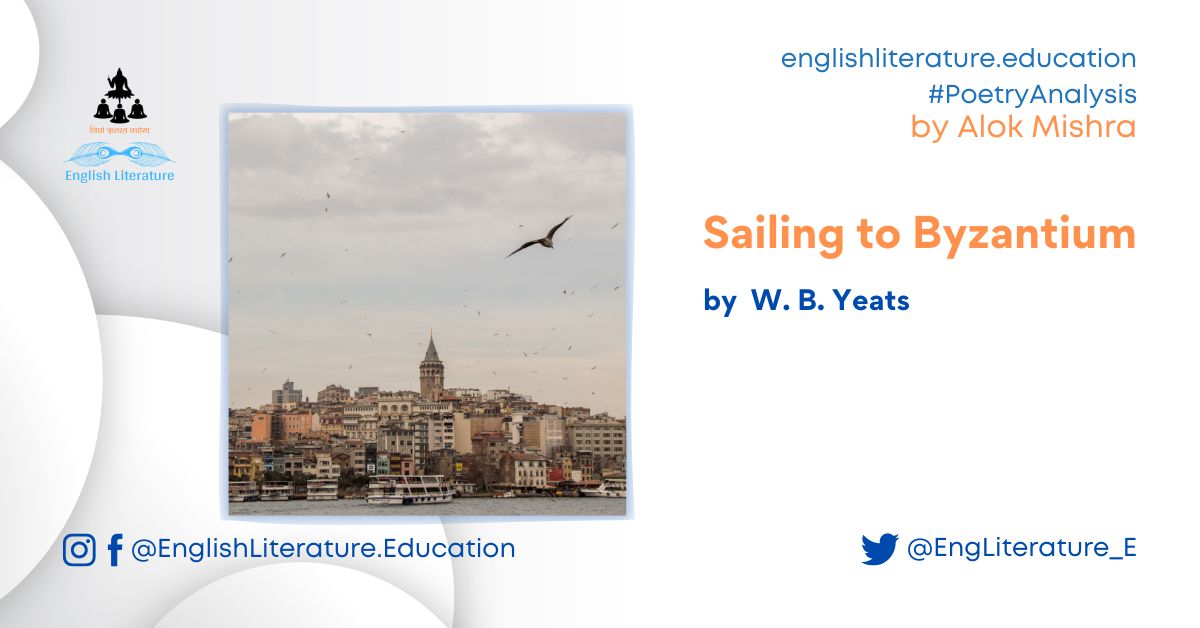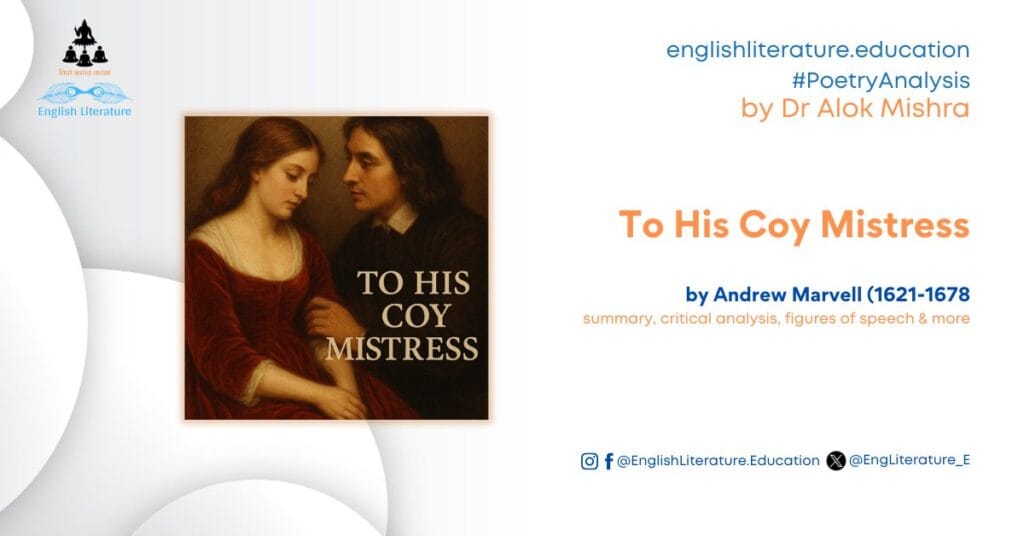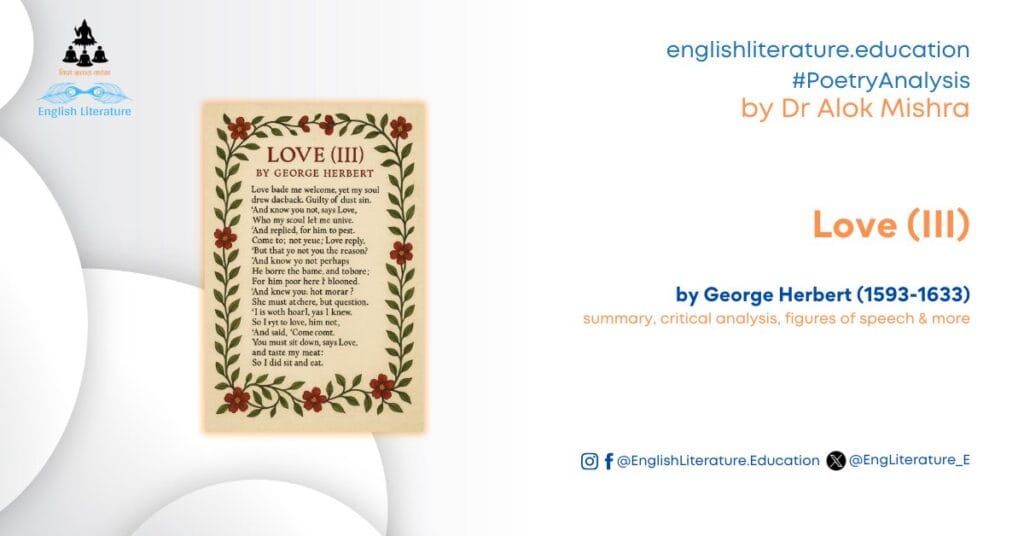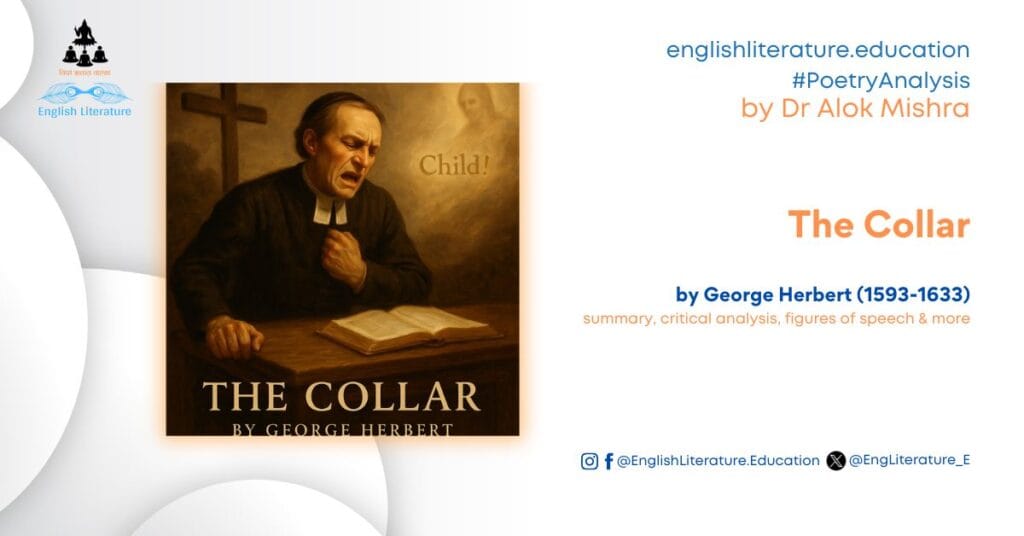Poetic devices used in the poem Sailing to Byzantium:
The poem Sailing to Byzantium by W. B. Yeats utilises various poetic devices to enhance its meaning and impact. Here is a list of the poetic devices used in the poem:
1. Imagery: The poem is rich with vivid imagery that appeals to the senses, such as “birds in the trees,” “salmon-falls,” “mackerel-crowded seas,” and “hammered gold and gold enamelling.” These images create a vivid and evocative picture in the reader’s mind. You can also find other examples of imagery in the poem by reading it carefully. The ones listed are the important ones.
2. Metaphor: The poet has used Metaphors in the poem very expressively. Though you can find several metaphors, notable examples include “soul clap its hands and sing” and “soul” being compared to a “singing-master”. These metaphors enrich the poem’s exploration of spiritual and artistic transcendence.
3. Symbolism: A word that is emphasised in the poem as a symbol is Byzantium. It serves as a symbol of spiritual enlightenment and artistic immortality. The city represents a realm where the pursuit of timeless wisdom and creativity converges.
4. Alliteration: The repetition of initial consonant sounds can be found in lines like “caught in that sensual music” and “consuming my heart away.” Alliteration adds a musical quality to the poem and enhances its rhythm. Further, the “s” sound in “salmon-falls,” “sensual music,” and “summer long” enhances the musicality of the poem and adds to the sensory experience of reading or reciting it.
5. Enjambment: The use of enjambment, where lines run into the next without a pause, creates a flowing and continuous reading experience. It contributes to the poem’s sense of movement and progression.
6. Personification: The concept of “soul” is personified in the poem, as it is described as being able to “clap its hands and sing” and “gather” the speaker into the “artifice of eternity”.
7. Repetition: The repetition of the word “sing” in the second stanza and the use of “and” at the beginning of several lines in the third stanza create a sense of rhythm and emphasise the speaker’s desire for expression and transcendence.
8. Assonance: The repetition of vowel sounds can be found in lines like “Fastened to a dying animal”. Assonance adds a melodic quality to the poem and contributes to its musicality.
9. Juxtaposition: The poem juxtaposes images of youth and ageing, the natural world and the city of Byzantium, and physical decay with the pursuit of immortality. This contrast highlights the central themes of the poem.
These poetic devices add sensory feeling, beauty, depth and visual qualities to the poem Sailing to Byzantium. Yeats used many poetic devices as he deemed fit for the purpose of telling his spiritual yearnings and metaphysical desires to mingle with the ‘artifice of eternity’. This was a long and tedious task, friends. I have tried to explain the poem line by line and also add critical comments wherever I found the need. With this final section, Poetic Devices Used in Sailing to Byzantium, I am concluding this exercise. Let me know how you liked reading this long article. I will keep bringing more. Also, try reading the poem many times before and after reading such explanatory articles so that you can learn how to analyse a poem.
By Alok Mishra for the English Literature Education Platform





11 Comments. Leave new
Excellent 👌
Thanks for such critical appreciation of poem sailing to Byzantium..long live..
Thanks for such critical appreciation of poem sailing to Byzantium..long live..
Great effort , hats off to the writer for such a beautiful explanation
Thank you for this amazing analysis of the poem Sailing to Byzantium by W. B. Yeats. It really helped me a lot with my paper. Many thanks.
Very detailed, easy to understand and useful for students of English literature. I got the central idea of the poem as well as many other things that I seldom thought about might be a part of this wonderful poem by Yeats.
Thanks for this wonderful explanation… it was very helpful. Learned many things about the poem by W. B. Yeats by reading this article.
Amazing article… I was looking for something on Sailing to Byzantium. I am a BA second year student and this poem is in my English Honours syllabus. Thanks for this amazing critical analysis, clear summary and critical commentary on the poem by W B Yeats. Please write on more poems from Indian University Syllabuses.
Thanks so much for this helpful analysis of sailing to Byzantium by W. B. Yeats. It was very helpful for my seminar.
Wonderful… I have to study this poem in my BA syllabus and I must say this article helped me a lot. The article has covered almost every aspect of the poem Sailing to Byzantium and I am very happy with the way you have described the poem, explained it and also added critical comments in your analysis of the poem. Keep up this good job team!
Thanks for this wonderful analysis of the poem sailing to Byzantium. I have to study this poem as part of my BA English literature syllabus. I read a few articles on different websites. This is the best one with apt summary, line by line analysis and almost the perfect critical commentary that opens up the poem even for beginners in literature… Well done guys!